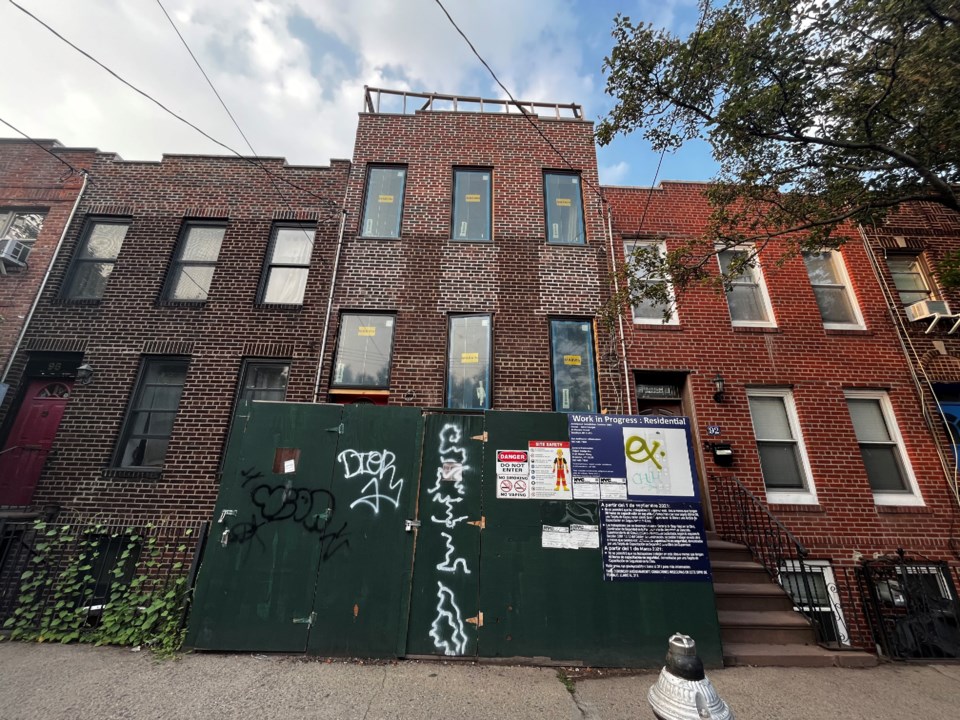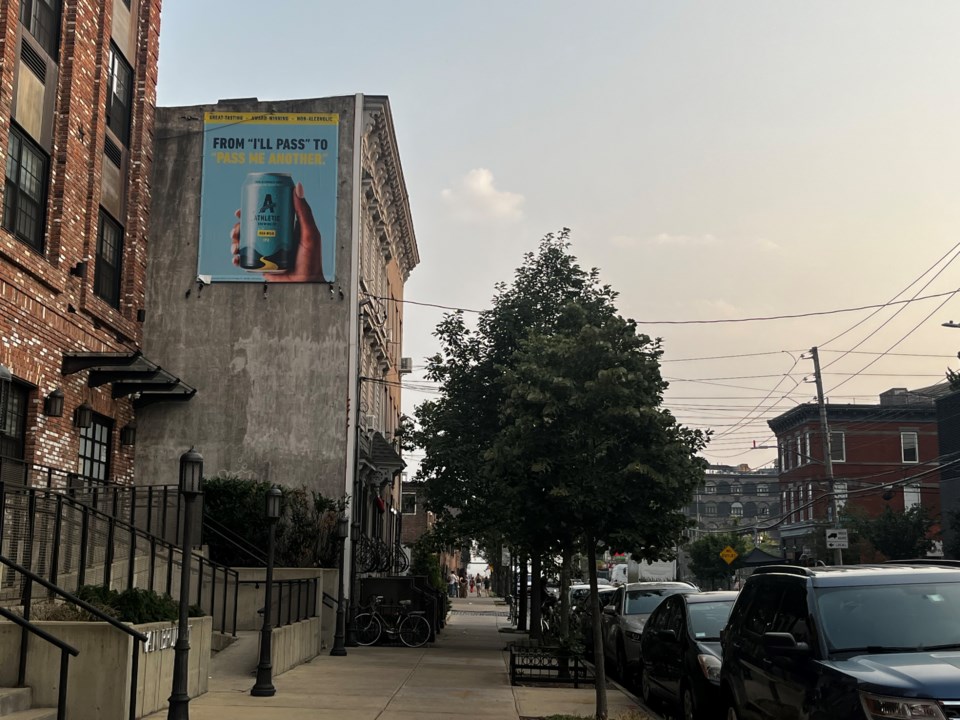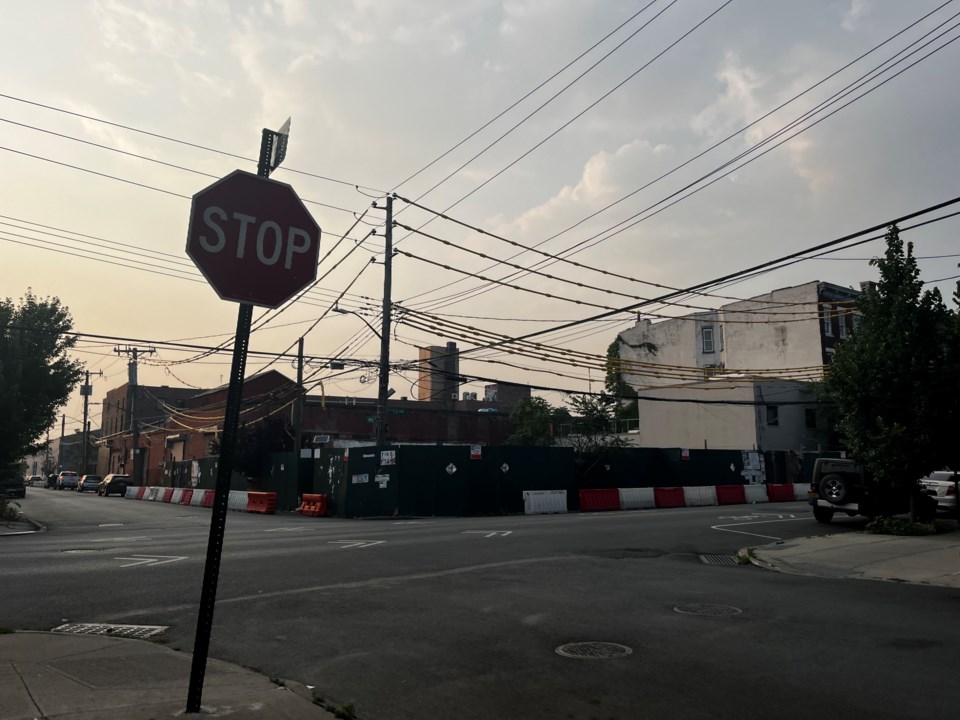By Jada Vazquez
The neighborhood of Red Hook, which is now known as a summertime hot spot by the water with crab shacks, barbeque spots, ice cream parlors and easy access to the pier, is a recent product of gentrification.
In the past three decades, the South Brooklyn area has experienced a decrease in cultural influences that have made communities into what they are. Black and Latino populations are dropping while white populations are growing and rent prices are growing more than minimum-wage jobs are paying. According to the New York census, from 2000 to 2010 there was a 38,774 population increase with white residents in Brooklyn, with large white population increases in neighborhoods along the East River waterfront.
Growing populations also included Asian populations increasing by 75,668, and the Hispanic population growing by 8,407, while the Black population faced a 49,517 decrease in the borough in just a ten-year period. More specifically, as of the most recent 2020 census, District 6 — which includes Red Hook, Carroll Gardens and Park Slope — says that 62% of the population is white, while 9% is Black, 8% is Asian and 16% is Hispanic.
Demographics also show the annual household income is $144,733, and 94.21% of the people living in the neighborhood are considered white-collar workers, which is quite a drastic difference considering the neighborhood was majority blue-collar workers. The neighborhood that was once designated for low-income New Yorkers is now one of the most expensive neighborhoods in Brooklyn.
Alfred Easton Poor designed the Red Hook Houses, which were completed in 1939. The history of Red Hook is long and detailed yet points back to keeping low-income residents in and middle-class residents out, explains an article by Michelle Montalbano, “A (Not So) Brief History of Red Hook.” Though these neighborhoods were built to keep the working class down, the people who made the community didn’t let these stigmas define them.
Karen Dawn Blondel is president of the Housing Authority Resident Association, an environmental justice organizer and a longtime Red Hook resident. She explained that Red Hook's history consisted of Black and Puerto Rican people creating a home and family within each other. And, though systematically underfunded and ignored by the media, a sense of community and a safety net was in place to create better futures for one another, Blondel pointed out. However, having new people move in wasn’t a problem, considering the opportunities and diversity that could be brought into the neighborhood after the downfalls from the crack epidemic in the 90s.
“I've never really looked at gentrification to be a major issue in Red Hook until they started talking about putting a 60-tower, exactly where I live in a six-story building,” said Blondel.

Situations like these aren't out of the ordinary for gentrifying areas. Neighborhoods like Bushwick and Williamsburg are just some of the Brooklyn areas that have dealt with the effects of this drastic change in the past 20 years. The New York Housing Authority, which used to have a flat rent of $495, now has no cap, meaning that the housing that is supposed to be affordable for working-class residents so they can essentially be set with a place to live for life, no longer has the accessibility it is supposed to have.
The area continues to change and experience effects of wealth moving in, such as the public schools getting more funding and opportunities for all children.
Take schools like P.S.15 Patrick F. Daly, which added the name of former Principal Patrick F. Daly to the end after the principal of the school was shot and killed outside of the school in 1992, for example.
The Red Hook school location is now so far removed from that history which was known for its gang violence during the crack epidemic. It now offers children access to various arts programs partnered with the school, occupational, physical, dental and speech therapists, according to the school website. Although schools that are a part-time home to children of all backgrounds have experienced change, public housing still faces its struggles.
Hurricane Sandy, which hit Red Hook hard, led to a lot of renovations, however, up until a few years ago, public housing did not get any renovations and has had little to no maintenance. Residents of public housing have been trying to ask for repairs and bring attention to the issue for more than 10 years and have continually been ignored. Once there were discussions of buildings being sold for privatization, changes began to make the buildings more suitable for people who might move in.
“Still, they have not fixed enough of the lead, the mold and the conditions, speaks a whole different thing to my mind,” said Blondel.
Sadef Ali Kully, a journalist who has covered housing issues in the South Brooklyn area and is a New York native currently residing in Red Hook, explained that laws under Trump have only further pushed to gentrify areas for real estate gain.
According to Opportunity Now, a government-issued website defining opportunity zones, explains, “Opportunity Zones are economically distressed communities, defined by individual census tract, nominated by America’s governors, and certified by the U.S. Secretary of the Treasury.”
Once an Opportunity Zone has investors to fund projects to build up these areas, they get a tax break of up to millions of dollars. Kully explained that in New York City, if a building is built before 1972, those landlords must follow rent control laws. Meaning the max amount a landlord can charge is $2,600 and not immediately. Every year rent can grow up to 7.5% and once the limit is reached, landlords can then charge as much as they want for apartment units.
Red Hook is considered an Opportunity Zone by the government because there are laws by the state to aid low-income occupants. Some landlords find loopholes to try to get families to move, or even do so much as leave empty apartment units empty so that when the rent control period is up, they don’t have to wait for families to leave and can immediately rent those apartments at whatever price they feel.
Kully recalls covering a family whose landlord would stuff the pipes when it would rain so water could flood the house, causing mold to grow and creating health problems for the babies and elders in the family. With government-backed gentrification laws, multibillion-dollar companies like Amazon can move into areas like Red Hook and get a $1.7 billion tax break.

Amazon workers only get paid about $20 an hour in a neighborhood that now costs on average $30,000 a year to rent a one-bedroom apartment. Sydney King, a teacher at South Brooklyn Community High School, has worked in Red Hook for more than 20 years and said she had seen the impact of gentrification on students and the community since she has been in the area. She said she comes from a long line of gentrifiers and believes, “If you don't examine it, you don't realize what you're doing.”
King said that through her line of work, she feels like she is helping the community to grow, unlike a lot of middle or upper-class people that move into neighborhoods and help build up areas that will only benefit a certain group, such as the new people who move in.
“How invisible the Black and Brown community is to all the gentrifiers they walk around, they don't even f-in see it,” said King, who sees students who sometimes begin to feel invisible in their own community.
She shared her experience with friends and family who actively participate in gentrification. She believes it’s a lack of self-awareness that many people have, and without that, you risk losing culture and repeating history.
“Gentrification is just more colonization because we haven't healed it or properly looked at it,” said King.
Though the topic of gentrification is ongoing and complex, there’s no set way to fix it as of right now, and even debate on whether or not that’s the correct word to be used when facing this issue. The Oxford Dictionary describes it as “a poor urban area changed by wealthier people moving in, improving housing, and attracting new businesses, typically displacing current inhabitants in the process.”
It’s an obvious problem recognized by the community that if only one group of people is benefiting from this change and certain people are being ignored, then this is exactly what is happening. With events like the COVID-19 pandemic, we still don’t even have the full scope of how far spread gentrification has moved throughout New York City in the past three years, or even the country for that matter.
Making it hard to fully grasp how fast the community is changing. Kully explained that gentrification is a complete change of an entire environment, with the loss of culture and community. Losing the people who helped build the city into what it is, is losing the diversity and love of the city.
“Like, those people are not there anymore. That's what made the neighborhood cool,” said Kully.
Jada Vazquez is first-generation college student from Brooklyn pursuing journalism, aiming to give a voice to the voiceless.




